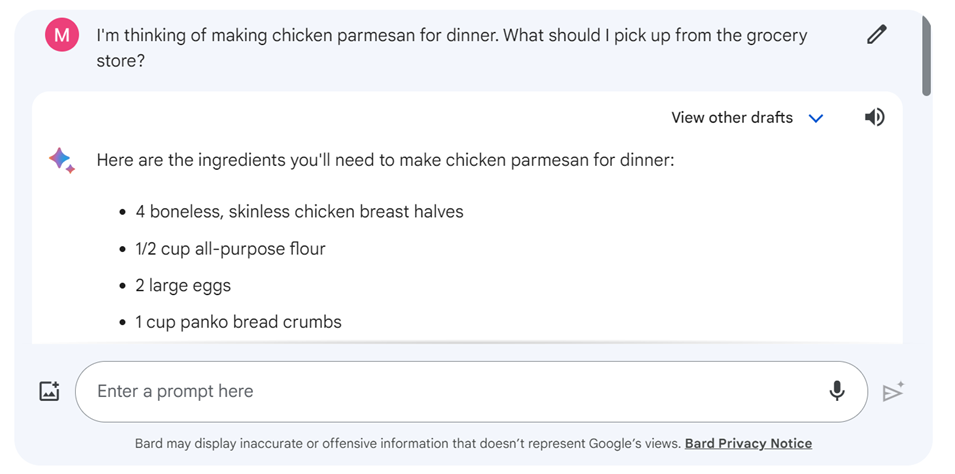Generative Artificial Intelligence (AI) refers to a variety of tools that respond to human requests in a variety of mediums, including text, audio and video. These tools are able to create unique responses to these requests, plausibly mimicking many elements of human communication.1
A helpful analogy for thinking about how these tools work and what they can do is to think of them like sending messages on your phone. With generative AI tools, you can send messages to the AI, and it can then respond. When the AI sends a message back to you, it is “generating” a response. Many chat-based forms of generative AI (such as ChatGPT) will reply with a written response, creating an interaction that is very similar to texting a human.

The messages that you send to the generative AI are called “prompts,” and the messages that the generative AI sends back are called “outputs”. Generative AI tools can respond to your prompts in a variety of modalities, including:
- Text
- Images
- Video
- Audio
While some of the most well-known generative AI tools respond to prompts with text, they can also respond with other mediums, just like a person can respond to your request for a “picture of a flower” by texting you back a photo that they took.


Prompts can also tell the AI to do things. Just like you could give a human step-by-step instructions to perform a task via text message, you can do the same thing with generative AI, and it can follow your instructions.

While some interactions may resemble messaging, in other instances these interactions may more closely resemble email exchanges. These tools, for example, can attach files such as PDFs and spreadsheets and can also generate long-form content. These tools are remarkably sophisticated, and as such, there will be many opportunities for innovation and many flawed approaches to how people and organizations attempt to use the tools. The resources on this website are designed to help you learn more about these tools and to consider the opportunities and challenges that they present.
-
This page was written in collaboration with Dr. Jules White (jules.white@vanderbilt.edu), Director of the Vanderbilt Initiative on the Future of Learning & Generative AI, Professor of Computer Science.